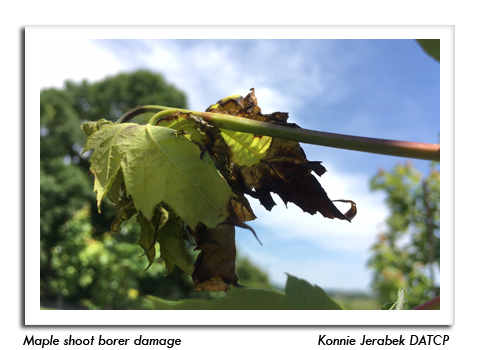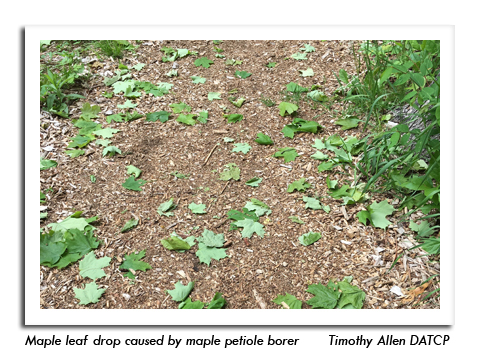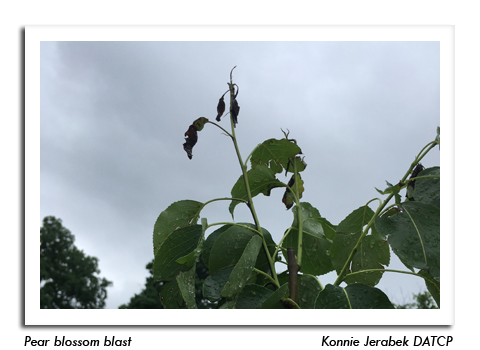
 |
|
|
Nursery & Forest
Volume 63 Number 7 Date 06/14/2018 VIBURNUM LEAF BEETLE - A report from the UW-Madison Insect Diagnostic Lab confirms that larvae of this invasive European beetle have been found on viburnum shrubs in at least seven Milwaukee County locations this month. Viburnum leaf beetle is particularly damaging because both the adult and immature forms rapidly defoliate viburnums. Successive feeding by larvae and adults prevents shrubs from refoliating and can kill otherwise healthy plants after 2-3 years of heavy infestation. Gardeners, landscapers, nursery stock growers and retailers in southeastern Wisconsin should be alert to the distinctive skeletonization of viburnum leaves caused by this insect and report sightings to DATCP or the UW. Counties in which VLB has been documented since 2009 include Milwaukee, Ozaukee, Washington, and Winnebago. MAPLE SHOOT BORER - Moderate damage caused by this tortricid moth was recently observed on 'Autumn Blaze' maples at nurseries in St. Croix and Dunn counties. Maple shoot borer adults become active in early spring, laying eggs on new maple shoots. Larvae bore into apical shoots and cause flagging and dieback. Slicing the wilted shoot tip vertically with a sharp knife will show evidence of boring activity and an exit hole along the blackened stem. In addition to flagging, the tip dieback creates new forked growth that requires corrective pruning to remove all but a single leader which may need to be trained using supports to grow. Pheromone traps can be used to monitor the early-season moth flight and determine the optimal timing of a single insecticide application, if warranted. CURRANT SPANWORM - This bright yellow, black, and white inchworm was found defoliating currant shrubs in the Reedsville area of northern Manitowoc County. The larvae feed on currants and gooseberry in the genus Ribes from late May through June, first consuming the tips of the leaves down to the midrib before defoliating entire shrubs. Pupation occurs in late June and the moths emerge in mid-summer. There is just one generation a year. Healthy, vigorously growing shrubs can usually tolerate feeding damage. MAPLE PETIOLE BORER - Sugar maple trees in Door County were exhibiting withered, flagged leaves attributed to the maple petiole borer. Larvae of this small sawfly bore into leaf stems or petioles of all maple species, causing weakness and leaf detachment. The larvae remain in the portion of the petiole still connected to the main branch, later burrowing into the soil to pupate after the infested segment falls to the ground. Although the early spring defoliation can be dramatic, trees generally retain the vast majority of their leaves until fall and are not adversely affected. No corrective action is needed. BACTERIAL BLOSSOM BLAST IN PEAR - 'Parker' and 'Luscious' pear trees in Polk County were diagnosed by the Plant Industry Lab as having blossom blast infection caused by Pseudomonas syringae, with concurrent evidence of Phomopsis canker also noted. The primary symptom is blackening near the shoot growth, similar to fire blight. Blossom blast can be a problem when cool and wet weather prevail during bloom, especially when fruiting spurs or blossoms are injured by frost or cold damage, leaving the trees susceptible to infection. Continued infection can result in small lesions and extensive shot-hole defoliation of leaves. This disease is difficult to manage, with application of copper-based bactericides being the only practical control option. -- Konnie Jerabek, Timothy Allen & Tim Boyle, DATCP Nursery Inspectors 





|
|
|